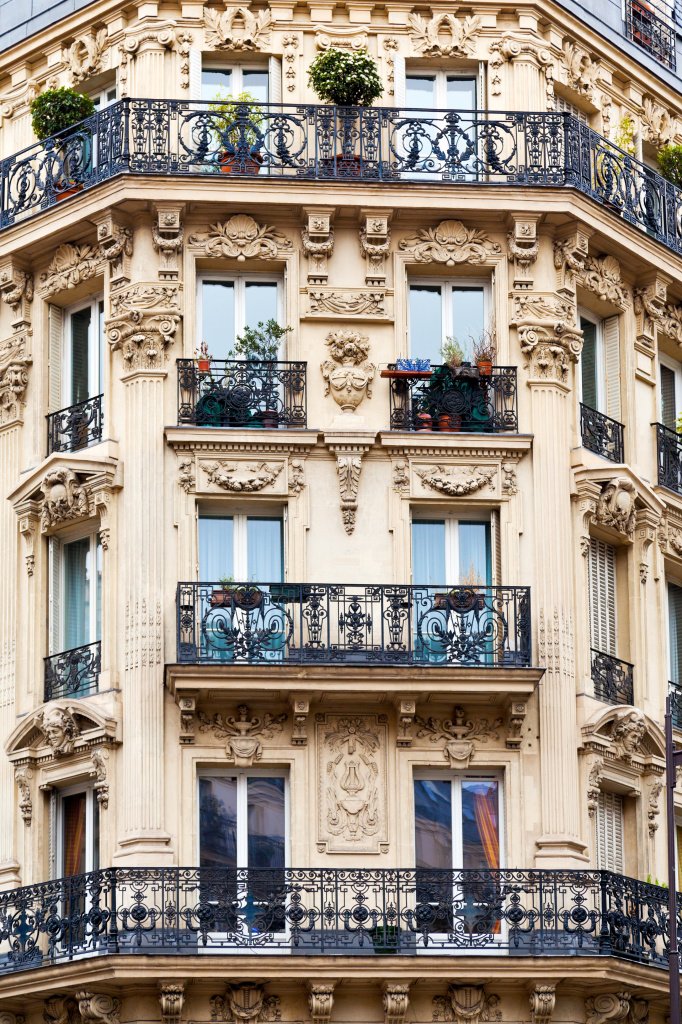#6004. Haussmannian Facade: The Elegance of Parisian Corner Architecture
The image showcases a magnificent example of Parisian beaux-arts architecture. The building's facade displays rich decorative ornamentation characteristic of French architecture from the second half of the 19th century. This corner building features an elegantly beveled shape, which was a typical solution for intersections during Baron Haussmann's reconstruction of Paris.
The facade is distinguished by an abundance of sculptural elements: lavish bas-reliefs with floral motifs, cartouches, mascarons, and stucco garlands. Particularly noteworthy are the decorative elements between windows and beneath balconies – classical rosettes, laurel wreaths, and mythological motifs crafted in sandstone. The central part of each floor is adorned with mascarons and more complex compositional arrangements.
The facade's rhythm is created through the alternation of windows and pilasters with Corinthian capitals. Each of the four visible floors has its own proportions and decorative accents while maintaining stylistic unity. The building gains particular elegance from its wrought iron balconies with intricate patterns, adorned with potted plants that add vitality to the otherwise formal architectural composition.
This building represents an excellent example of how Haussmann's reconstruction of Paris combined monumentality with elegance, functionality with decorative elements, creating that unique image of the city that we recognize today.
